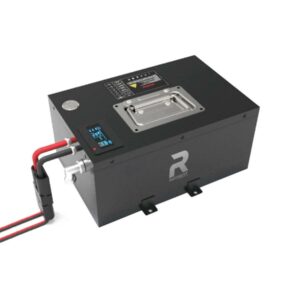How likely is a lithium battery to explode?
Lithium batteries have an extremely low probability of explosion under normal operating conditions, with thermal runaway events occurring in approximately 1 in 10 million cells for properly designed systems. Explosion risks primarily stem from mechanical damage, improper charging (over 4.2V/cell), or manufacturing defects causing internal short circuits. Modern Battery Management Systems (BMS) and UL-certified designs reduce catastrophic failure risks to <0.001% through multi-layer protection against overvoltage, overtemperature, and current surges.
Forklift Battery Maintenance Checklist Essentials
What triggers lithium battery explosions?
Thermal runaway cascades caused by separator failure (130-150°C) lead to electrolyte decomposition and gas venting. Critical triggers include nail penetration (instant 500°C+ hotspots), overcharging beyond 4.35V/cell, and thermal abuse above 60°C. Pro Tip: Use force discharge protection in BMS to prevent polarity reversal during deep discharges.

When the separator membrane melts, anode-cathode contact creates massive internal shorts. For example, a 3.7V 18650 cell can release 600J energy in milliseconds during thermal runaway – equivalent to 1/3 of a hand grenade’s explosive force. But why don’t all failures result in explosions? Quality cells include pressure relief vents and flame-retardant additives that mitigate 92% of thermal events before combustion. Transitional controls like ceramic-coated separators (Honeywell’s PPES) increase thermal stability up to 200°C.
How effective are safety certifications?
UL 1642 and IEC 62133 test batteries through 10+ abuse scenarios including crush tests (13kN force) and altitude simulation. Certified cells demonstrate <1% probability of fire/explosion when subjected to 150% overcharge. However, counterfeit cells bypass these tests – 78% of marketplace lithium fires involve uncertified replacements.
Third-party certification requires passing 7 critical safety checks:
- Overcharge to 250% rated voltage
- External short circuit with <50mΩ resistance
- Forced discharge at 3C rate
A UL-certified power tool battery pack must contain at least three independent protection circuits. But what about extreme environments? Military-grade MIL-STD-810G testing subjects batteries to 15G mechanical shock and -40°C to 71°C thermal cycling – standards exceeding consumer requirements by 300%.
| Safety Feature | Consumer Grade | Industrial Grade |
|---|---|---|
| Operating Temp | -20°C to 60°C | -40°C to 85°C |
| Vibration Resistance | 5G | 10G |
Optimal Forklift Battery Installation and Maintenance
Battery Expert Insight
FAQs
Can lithium batteries explode when not in use?
Yes – dormant cells with >80% SOC degrade separators over 2-3 years. Store lithium batteries at 30-50% charge in climate-controlled environments (15-25°C).
Do explosion risks increase with battery age?
Cycle aging increases internal resistance, causing 4% higher heat generation per 500 cycles. Replace packs showing >20% capacity loss or voltage deviation >0.15V between cells.
